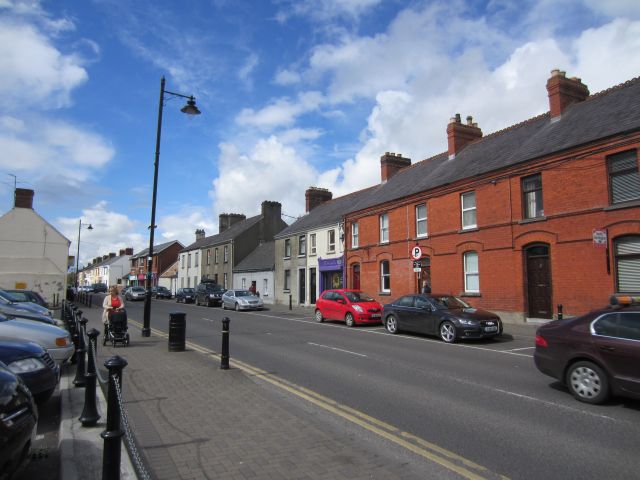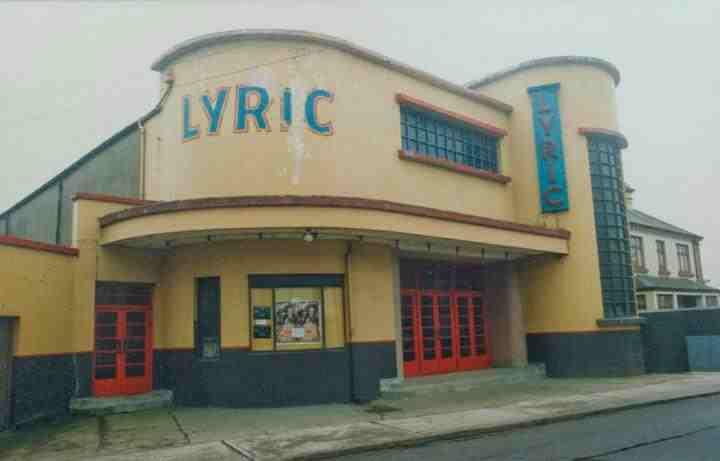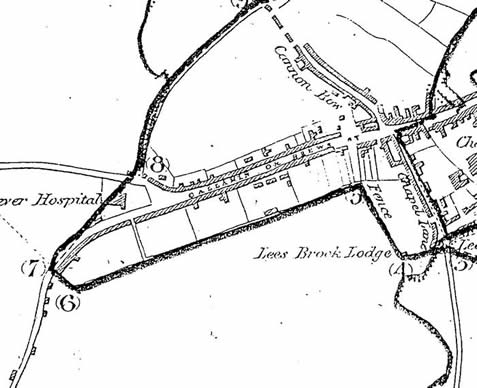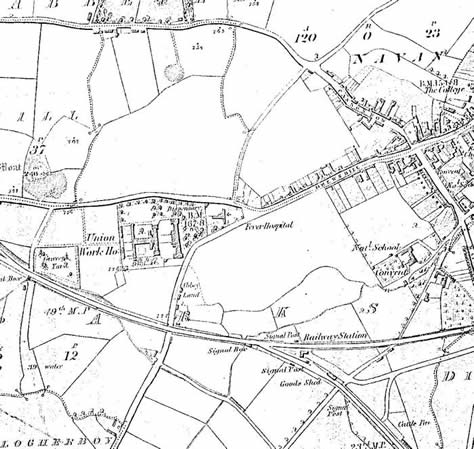Brews Hill
Brews Hill

Brews Hill runs from Trimgate St. towards Pairc Tailteann and the Hospital,
which was once the Workhouse.

The old Lyric Cinema Brews Hill. (Photo courtesy of Shay Culligan)

Ordnance Survey Map 1835 showing Callamen or Brews

O.S. Map 1882 The Street name is now recorded as Brews Hill
In the nineteenth century, Brews Hill form part of the Russell estate, among the largest landowners in the United Kingdom of Great Britain and Ireland. The eldest son of the Russell family inherited the Dukedom of Bedford, and several Dukes served as Lord Lieutenant of Ireland, including the sixth Duke of Bedford who died in 1839, and who bequeathed his estate to his son, Francis, the seventh Duke of Bedford.
This left other members of the family bereft of any stake in the family estate. Among them was Lord John Russell, the brother of Francis. One of the leading Whig politicians of the era, Lord John Russell is better known as the Prime Minister who oversaw the disastrous response to the Irish Famine. By resisting any change to the prevailing economic policies of Laissez Faire, his administration exacerbated the consequences of the failure of the potato crop between 1845-7. The poet Bertrand Russell was the prime minister’s grandson.
Francis, 7th Duke of Bedford sought to improve the Brews Hill portion of his estate. In the years prior to the famine it contained many small mud cabins of ill repute. The outline of the cabins can be seen in the survey carried out for the purposes of establishing Navan town boundaries in 1834, running out like a modern ribbon development. The road was referred to as Callamin or Brew. Callamin is possibly derived from the Irish 'cúl' or back. He ordered his agent to enquire into the situation there, with a view to clearing the tenants, and the cabins. The agent's report, surviving today, contains a graphic account of the lives of some of the poorest inhabitants of Navan before the onset of the famine.
The agent reported to ‘His Grace’, as he referred to him, that when the lands were leased to a Mr Barry in 1774, there were four ‘slated houses’ and seven ‘cabins’ on the road. The holding comprised 10 acres and was let for ‘three lives’ at an annual rent of £43.
When the leased expired in 1839, a new one was made to a Reverend Hamilton for thirty years for an annual rent of £43. Hamilton (whose family had done well out of the old Corporation of the town) held about 10 acres of the Russell estate bounded by Brews Hill to the west and Chapel Lane on the north. The leasing policies of these gentlemen led to the erection of 83 ‘wretched mud cabins’ by the 1840s, and in addition six ‘back houses’, in the small allotments at the rear of the houses facing the street. The agent found that there now 34 tenants on the property, who in turn rented to 49 sub tenants. The tenants managed to raise £76 every year in rent, much of it extracted from their sub tentants. In order to pay their rents, the sub-tenants were compelled to take in lodgers on a daily or weekly basis. This resulted in a population on the street of around 470. So basically, Hamilton paid £43 in rent, and from his 34 tenants he got £100, a profit of £57 for doing nothing.
The cabins became overcrowded as a result of this pattern of subdivision. A police sergeant assured the agent that at least one house accommodated seven families. The inhabitants were regular visitors to the courts. With little by way of employment, many of them resorted to ‘plunder’ for a living. The agent described the street as ‘a receptacle of all villainy and a nursery of crime and disease’, and furthermore a ‘refuge for the outcasts of the neighbouring county’. Apart from plunder, they depended in large part from rations distributed by the nearby workhouse. According the agent, some 478 persons were receiving rations from the workhouse, paid for in large part by ‘His Grace’, the Duke of Bedford.
The Duke, a competent and ambitious man, saw that portions of his Navan estate were giving him a bad name. The cost of improving the street did not come cheap. The Reverend Hamilton was looking for £1100 as a once off payment for the cabins, and a further £4 a year for the lands to the rear. The agent recommended that His Grace refuse the offer, saying the price was ‘exorbitant’.
But Russell bought out Hamilton, and like a good improving landlord, cleared off the surplus population, only to be met by a great protest read out by the indefatigable Parish Priest of Navan Rev. Eugene O'Reilly. Fr. O' Reilly pointed out that far from being people of ill repute, the poor of the Brews were merely decent country folk turned off their plots by landlords turning their estates into cattle ranches; sent to the workhouse, and then thrown out of that to make room for those coming after them. Naturally they stayed (albeit in squalor) to receive the Outdoor Relief available.
There were many other rows of mud cabins stretching out from the large towns in pre-famine Ireland. The owners, or tenants, and their lodgers eked out a living by casual work, petty crime, and the relief given by the local workhouse. Most of them did not survive the famine. Overcrowded workhouses, decreased rations, malnutrition and disease saw to their demise. The cabins of Brews Hill, evident in the map of 1835 are but a small reminder of this cataclysmic event, when the population of Ireland fell by 3 million in less than ten years.
By 1881, when the town was again surveyed by the Ordnance Survey, many of the cabins had disappeared. The Duke of Bedford appears have got his way, perhaps in circumstances not to his liking. The failure to rescue the poorest from the effects of the potato blight over several years in the 1840s, suggests that to some extent, policies advocated by his brother helped him secure the improvement. Some of the lands occupied by the cabins were made fallow, and later used for agricultural shows. Some time later the showgrounds were taken over by the GAA, and replaced with An Pairc Tailteann, the Meath County sports grounds.
Sources:
Rev. Gerard Rice Articles on the History of Navan, Meath Chronicle, 1980
Neil O'Flanagan O'Flanagan Consultants Archaeological and Heritage Services
Weir Papers Bedford Estate MCA/PP5 Navan Library
(See the Hamilton Affair )
*******
Below is the list of tenants in the street in 1884 from the de Ros Estate Rental Books.
(Courtesy of Meath County Archive which bought the de Ros Estate Rental Books
at the auction of the estate of the late William Battersby.)
1 - 6 Christopher Gregory 14 Pat Finegan
7 John Magan 15 ? Hinds
8 Thomas Smith 16 Elizabeth Murray
9 Thomas Walsh 17 Thomas Callaghan
10 Pat McEntagart 18 Laurence Clusker
11 Michael Gaffney 19 Mary Sheerin
12 Thomas Downes 20-21 John Kennedy
13 James Gargan
*******